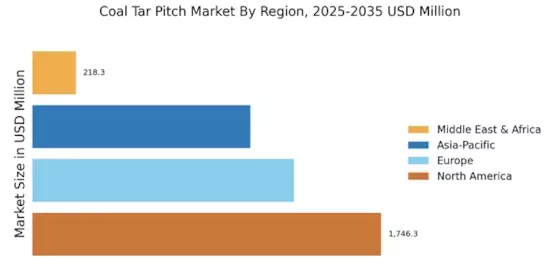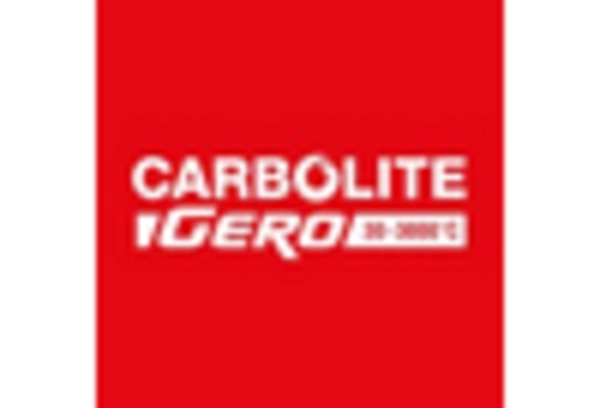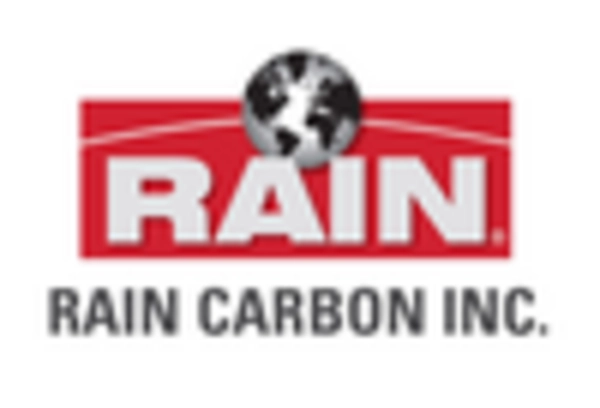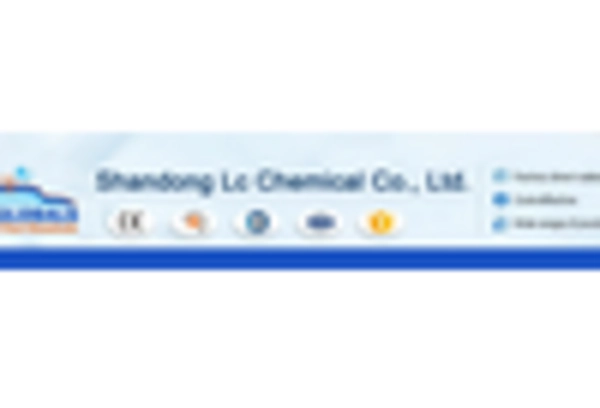Expansion of Construction Activities
The Coal Tar Pitch Market is significantly influenced by the expansion of construction activities across various regions. As urbanization accelerates, the demand for construction materials and infrastructure development rises, leading to an increased requirement for coal tar pitch. This material is utilized in the production of roofing, paving, and other construction applications, making it a vital component in the construction sector. Recent data indicates that the construction industry is projected to grow at a compound annual growth rate of around 5% over the next few years. This growth is expected to drive the demand for coal tar pitch, as it plays a crucial role in enhancing the durability and performance of construction materials. Consequently, the expansion of construction activities is likely to serve as a significant driver for the coal tar pitch market.
Rising Demand from Aluminum Industry
The Coal Tar Pitch Market experiences a notable surge in demand primarily driven by the aluminum sector. As aluminum production relies heavily on coal tar pitch as a binder in the production of anodes, the growth of the aluminum industry directly influences the coal tar pitch market. In recent years, the aluminum production has seen a steady increase, with estimates suggesting a growth rate of approximately 4% annually. This trend indicates a robust demand for coal tar pitch, as it is essential for the efficient functioning of aluminum smelting processes. Furthermore, the increasing applications of aluminum in various sectors, including automotive and construction, further bolster the coal tar pitch market. As the aluminum industry continues to expand, the coal tar pitch market is likely to benefit significantly from this upward trajectory.
Technological Innovations in Production
Technological advancements in the production processes of coal tar pitch are emerging as a key driver for the Coal Tar Pitch Market. Innovations aimed at improving the efficiency and sustainability of coal tar pitch production are gaining traction. For instance, the implementation of advanced distillation techniques and the use of alternative feedstocks are being explored to enhance yield and reduce environmental impact. These innovations not only improve the quality of coal tar pitch but also align with the growing emphasis on sustainable practices within the industry. As companies adopt these technologies, the overall production capacity of coal tar pitch is expected to increase, potentially leading to a more competitive market landscape. This focus on technological innovations is likely to play a pivotal role in shaping the future of the coal tar pitch market.
Increasing Applications in Carbon Products
The Coal Tar Pitch Market is witnessing a diversification of applications, particularly in the production of carbon products. Coal tar pitch serves as a critical raw material in the manufacturing of carbon electrodes, which are essential for various industrial processes, including steel production and aluminum smelting. The demand for carbon products is on the rise, driven by the increasing need for energy-efficient solutions in industrial applications. Recent estimates suggest that the carbon products market is expected to grow at a rate of approximately 6% annually. This growth is likely to enhance the demand for coal tar pitch, as manufacturers seek high-quality raw materials to meet the evolving needs of the carbon products sector. Consequently, the increasing applications of coal tar pitch in carbon products are poised to be a significant driver for the market.
Regulatory Support for Sustainable Practices
The Coal Tar Pitch Market is increasingly influenced by regulatory frameworks that promote sustainable practices. Governments and regulatory bodies are implementing policies aimed at reducing carbon emissions and encouraging the use of environmentally friendly materials. These regulations often create a favorable environment for the coal tar pitch market, as companies are incentivized to adopt sustainable production methods. Additionally, the push for sustainability is leading to increased research and development efforts focused on improving the environmental performance of coal tar pitch. As companies align their operations with regulatory requirements, the demand for sustainably produced coal tar pitch is likely to rise. This regulatory support for sustainable practices is expected to serve as a crucial driver for the coal tar pitch market, shaping its future trajectory.


















Leave a Comment